The Ultimate Guide to a Successful Business Website and Website Design
In the fast-paced digital era, website design stands as the foundation of a business's online presence. A well-crafted business website can help to define a business's identity and shape better user experiences. It is a powerful tool for engaging customers and driving conversions. As businesses navigate the competitive landscape, a strategically designed website has become a must-have key asset.
A business website is a platform that opens doors to both local and global audiences. It serves as a 24/7 virtual storefront. As a Malaysian web design company, we have written this ultimate guide to a successful business website to unravel the importance of website design. Whether you are a startup or an established organization, understanding the relationship between effective website design and business success is paramount.
Table of Contents
What is Website Design?
Website design is the process of creating the structural and visual elements of a website. It involves the layout planning, typography, and integration of various interactive features such as buttons and menus. Web designers' job is to enhance user experience and convey the brand's identity via the website.
Website design is a process that touches both creative and technical areas. Both aesthetic and functional aspects of a brand or business website are equally important. It considers factors such as usability, accessibility, and responsiveness across various devices.
Website design is not a one-off process. It needs to be evolved with technology, adapting to changing user behaviours and design trends. Ultimately, effective website design contributes to an engaging online presence and the realization of business goals.

The History of the Website
Due to the ambitious dreams of early visionaries, the internet took its first steps successfully in the late 20th century. The introduction of the World Wide Web in the early 1990s marked a transformative moment. It paved the way for the creation of websites. In the old days, websites were constructed with basic HTML structures and limited interactivity. The primary focus was on relaying information rather than delivering a captivating user experience.
As the internet matured, the concept of websites also underwent a notable change. The transition from Web 1.0 to Web 2.0 brought about a huge shift. The static and information-centric websites of the past gave way to dynamic platforms that encouraged user interaction. This shift not only altered the functionality of websites but also laid the groundwork for a more user-centric approach to design.
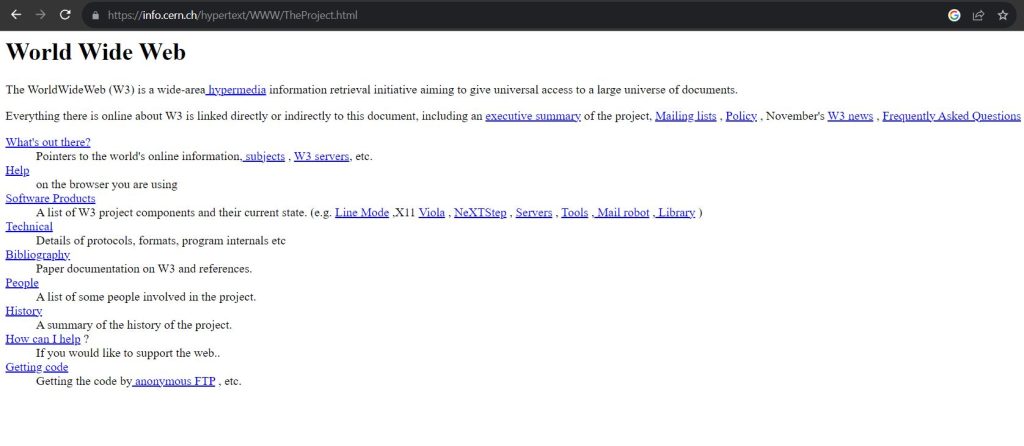
Today, information dissemination is not the only purpose of a website. A successful website should combine factors such as technological advancement, user-centric principles, and artistic expression to provide a seamless user experience. An impactful online experience is one of the core factors that influences a user whether to take further meaningful actions after browsing your website.
According to Cognitive Market Research, the global web design services (including website design, SEO, hosting, and domain sales) market is valued at USD 58.5 billion in 2022. It is projected to experience a compound annual growth rate of 8.5% from 2023 to 2030. From this simple statistic, we can see the trend where more and more global businesses are leveraging online platforms to optimize operations and expand their digital footprint. Web design services are critical in facilitating this transition. If you have not yet ventured into this digital evolution, we urge you to act promptly in establishing your online presence starting today.

The Stages of Website Design
- Discovery and Planning: The journey begins with a thorough understanding of the client's goals, target audience, and the overall purpose of the website. This phase involves comprehensive research, competitor analysis, and the establishment of a strategic roadmap.
- Wireframing and Prototyping: Translating ideas into tangible website structures. The web designer will create wireframes that outline the skeletal framework of the website. Prototypes or interactive representations of the design are often crafted to visualize the user journey and functionality.
- Design Execution: This is the phase where designers' artistic senses are coming into play. Designers leverage visual elements, colour schemes, typography, and imagery to breathe life into the wireframes. The ultimate goal is to create a visually appealing and cohesive look.
- Development and Coding: With the design blueprint in hand, web developers step in to convert the visual concept into a functional website. This involves coding, database creation, and integration of various interactive elements.
- Testing and Quality Assurance: Rigorous testing is conducted to identify any bugs, glitches, or performance issues. Quality assurance ensures that the website functions seamlessly across various devices and browsers.
- Launch and Maintenance: After planning and execution, the website is launched into the digital realm. Post-launch maintenance and updates are essential to keep the website relevant and secure.

Why Website Design is Important for Businesses?
Online presence is important in today's business landscape. Website design is extremely important for businesses as it can affect both the look and performance of business websites. A well-designed website can be a powerful tool that can significantly impact a company's success. These are the top 9 reasons why website design matters for businesses.
1. First Impressions Matter
Your website is often the initial point of contact with potential customers. A visually appealing and user-friendly design creates a positive first impression, fostering trust and credibility.
2. Reflecting Your Brand Identity
Website design is a visual representation of your brand. Consistent use of colors, typography, and imagery helps build and reinforce brand identity, making your business easily recognizable.
3. User Experience
A well-designed website can offer a positive user experience with easy navigation, responsive design, and clear calls to action. When your web visitors enjoy interacting with your website, they are more likely to carry out meaningful further actions such as purchasing and inquiring.
4. Competitive Edge
In a crowded online marketplace, a professionally designed website sets you apart from competitors. It's an opportunity to showcase your uniqueness and stand out in the digital landscape.
5. SEO Optimization
A business will need a business website to run an effective search engine optimization or SEO campaign. Search engines favor websites with good design practices. A well-structured site with optimized images and mobile responsiveness contributes to better search engine rankings. When a business website is ranked higher on search engine result pages (SERPs), it can enhance the business's online visibility and ultimately attract more organic traffic.

6. Customer Engagement
The longer visitors stay on your website, the more likely they are to convert into customers. Hence, website design plays an important role in utilizing interactive elements, engaging content, and a well-designed layout to keep visitors on your site longer.
7. Trust and Credibility
Your business website is an important digital storefront that represents your brand or business. In today's digital world, imagine what will your potential customers think of your business if they cannot even find any online traces.
Without a business website, your potential customers will have doubts. However, even if you have a business website, a poorly designed website can sometimes do more harm. It can lead to mistrust and a lack of professionalism. A polished and professional design instills confidence in your audience. Trust is a key factor in converting visitors into customers.
8. Effective Communication
Website design is a visual language that communicates your message effectively. It guides visitors through your content, highlighting key information and encouraging desired actions.
9. Analytics and Improvement
A well-designed website allows for easy integration with analytics tools. Monitoring user behavior provides valuable insights, enabling continuous improvement and optimization.

Industries that can Benefit from Website Design
The impact of website design transcends industry boundaries. In this section, we will delve into the diverse sectors or industries where effective web design is a catalyst for success. Whether you are in e-commerce, healthcare, finance, or any other industry, investing in professional web design is an investment in your brand's success and customer satisfaction.
1. E-commerce
In the fast-paced world of online shopping, a well-designed e-commerce website is crucial. It enhances the user experience, facilitates seamless navigation, and promotes trust. A professional e-commerce website can lead to increased sales and customer retention.
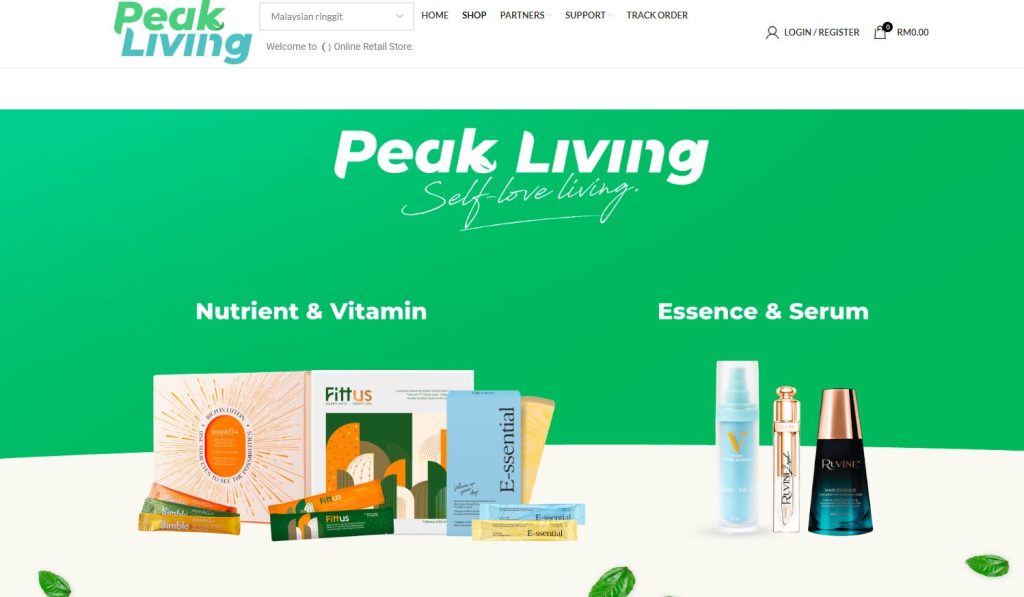
2. Finance
In the financial sector, a professionally designed website instills confidence and credibility. It allows for secure online transactions, easy account management, and effective communication of financial services.
3. Healthcare
A user-friendly website in the healthcare industry improves patient engagement. It provides easy access to information, appointment scheduling, and telemedicine services. Ultimately, a healthcare or hospital website can enhance overall patient care.
4. Real Estate
A visually appealing and informative real estate website is a powerful tool. It showcases property listings, provides virtual tours, and facilitates communication between agents and potential buyers. Besides, when websites help to streamline the property search process, they offer valuable convenience to all parties involved.
5. Tourism and Hospitality
For hotels and travel agencies, an attractive website is a virtual storefront. It enables easy booking, showcases amenities, and creates a visually appealing representation of the destination. As a result, more users are attracted and bookings are made.

6. Technology
In the tech industry, a website serves as a digital storefront that explains the services or solutions provided by a tech company. It communicates innovation and provides a platform for customer engagement. Without a website, potential customers might have a hard time understanding the related tech services that they are unfamiliar with.
7. Education
Educational institutions benefit from websites by providing a centralized platform for course information, student resources, and communication. It aids in student recruitment and engagement. Besides, educational organizations can also use websites to educate students with their engaging content such as videos, graphs, and interactive texts.
8. Manufacturing
Manufacturing companies can benefit from websites by establishing an online presence. A website can showcase products, communicate brand values, and provide a channel for customer inquiries and orders. Besides, a website is also an effective tool for a manufacturer to communicate with global customers and suppliers easily. Websites can be created with multiple languages so that visitors can quickly find the information they are looking for regardless of country and language.
9. Non-profit Organizations
Non-profit organizations (NPOs) or Non-governmental organizations (NGOs) can utilize websites to raise awareness and funds. Since a well-designed website can promote trust due to its professional look, it can communicate the organization's mission effectively and facilitate easy donations.
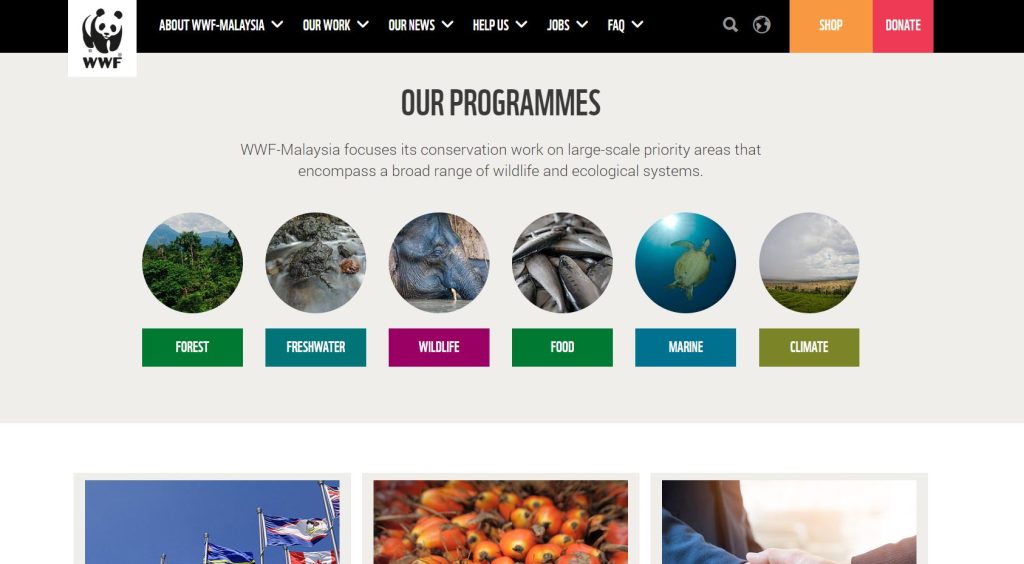
10. Legal Services
For law firms, a professional website builds credibility and trust. It can feature lawyer profiles, share legal insights, and provide useful resources. A well-designed website can be a valuable tool for client acquisition.
11. Food & Beverage
Restaurants and food businesses can use websites for online menus, reservations, and promotions. A visually appealing site can attract customers and enhance the overall dining experience.
12. Fitness and Wellness
In today's fast-paced world, more and more people are paying close attention to their health conditions. These health-conscious people are constantly looking for services such as gymnasiums, yoga classes, and training programs. They are also craving for health tips and information.
Using a website can serve as a hub for class schedules and information sharing. It enhances customer engagement and simplifies appointment scheduling. Additionally, a well-designed website can also provide users with a tailored fitness experience and valuable resources to promote a healthier lifestyle.
13. Event Management
Event planners can use websites to promote upcoming events, manage registrations, and provide event details. It enhances the attendee experience and streamlines event logistics.
For example, a concert organizer can create a dynamic website to showcase performers, sell tickets, and share event highlights. On the other hand, a marathon organizer can use a website to register participants, communicate race details, and provide training guides. In the world of event management, a well-designed website becomes a central platform for engaging audiences and ensuring seamless event execution.
14. Transportation and Logistics
In this industry, a website can offer real-time tracking, booking services, and communication channels. It improves customer experience and provides transparency in services.
For senders, a well-designed interface simplifies the process of booking transportation services and provides clear communication channels. On the other hand, receivers can monitor their parcels' status with ease. With the aid of business websites, transparency can be fostered and customer satisfaction can be enhanced in the transportation and logistics sector.
15. Retail
Retailers harness websites for both online sales and enhancing the in-store experience. By seamlessly connecting online and offline shopping, a well-designed website contributes to brand loyalty and customer engagement.
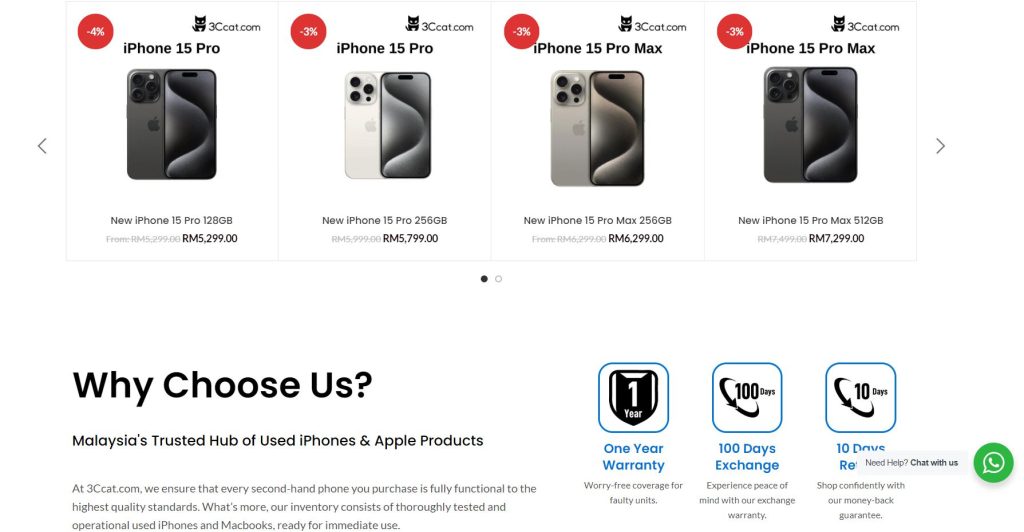
16. Automotive
Car dealerships benefit from websites for showcasing vehicle inventory, facilitating test drives, and providing information on services. It expands the reach and attracts potential buyers.
17. Interior Design
Interior designers can use websites to showcase portfolios, share design philosophies, and attract potential clients. It serves as a visual representation of their work and style.
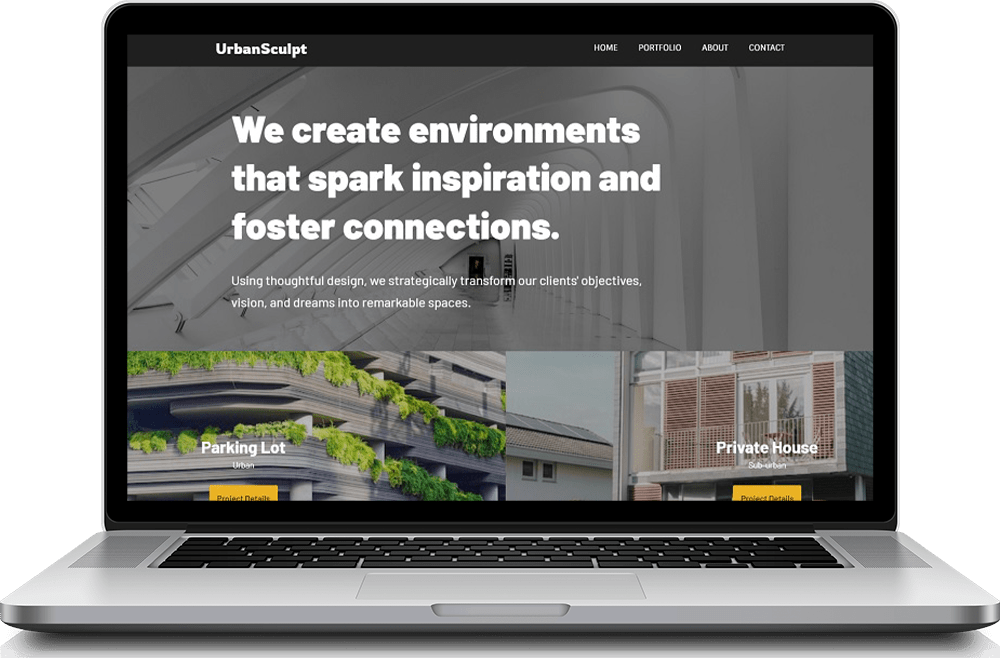
18. Media and Entertainment
Media companies benefit from websites for content distribution, audience engagement, and advertising. It provides a centralized platform for entertainment offerings.
19. Government Agencies
Government websites offer citizens access to information, online services, and official announcements. It enhances transparency and facilitates communication between the government and the public.
For example, if you plan to run an online lending business and develop a digital lending app in Malaysia, you can visit the KPKT (Ministry of Local Government Development) website for information on the operating license. Imagine if the relevant authorities or agencies do not publish this important information on their websites, the applicants will have to spend time visiting the offices physically without proper supporting documents. It can cause inconvenience and time wastage to both the government agency and applicants.
Key Elements of Website Design
The key elements of website design serve as the building blocks that shape both the visual appeal and user experience. Each element plays a critical role in creating a successful business website. These elements are the cornerstones in influencing user engagement, accessibility, and even search engine rankings. Understanding and implementing these key elements are fundamental to establishing a compelling online presence. In this guide to a successful business website, we would like to talk about the top 18 key elements of web design.
1. Colour Scheme
Colour scheme involves the careful selection of colours that can represent a brand and evoke emotions from website visitors. The chosen colour palette should create a harmonious design that can foster brand recognition and convey the intended mood of the website.
Consistency is the key here. If your brand colour is red, your website's colour palette should stay close to it. Inconsistent colour usage can confuse and hinder visitors from remembering your brand accurately.

2. Typograhy
Typography refers to the style, size, font, and text arrangement of a website. It plays a crucial role in enhancing readability and contributing to the overall design aesthetic. The right choice of fonts can also add personality to the website. By paying attention to typography, web designers can elevate the visual impact of the website and enhance the overall user experience.
3. Layout
Layout is the architectural blueprint of a website. It shows how its various elements can come together to create a visually pleasing structure. It involves the placement of text, images, navigation menus, and other components to guide users seamlessly through the digital space.
Besides, a well-designed layout also plays a crucial role in user experience. It allows easy navigation where visitors can find information effortlessly. Whether it is a minimalistic or vibrant design, the website layout serves as an important foundation for the success of a website.
4. Navigation
The menu and navigation structure help users move seamlessly through the website. They are critical in improving user experience and accessibility.

5. Whitespace
Whitespace involves the strategic use of empty spaces in and around website content. It enhances readability by preventing visual clutter, making it easier for users to focus on the important parts of a webpage. It acts as a visual separator that guides users through the content and creates a sense of balance. When utilized effectively, whitespace contributes to a clean and modern design that promotes user comprehension.
6. Images and Graphics
Images and graphics contribute significantly to the overall visual appeal and user engagement. High-quality visuals serve the purpose of conveying information effectively. They are powerful tools for capturing attention and establishing brand identity.

7. Loading Speed
Loading speed is the time taken for a webpage to fully load its content. This aspect is important in influencing search engine rankings and overall website performance. A fast-loading website contributes to a positive user experience with lower bounce rates. Moreover, search engines consider loading speed as a ranking factor. A fast-loading website can ensure its visibility and competitiveness in online environments.
8. Call to Action (CTA)
The Call to Action (CTA) is a critical element in website design. It is placed to prompt users to take specific actions that align with the website's objectives. These can include making a purchase, contacting the business, or signing up for newsletters. The CTA is normally presented as a clickable button or link. Well-designed CTAs are clear and strategically positioned throughout the website to maximize engagement. Their ultimate goals are to generate leads, drive sales, or encourage user interaction.

9. Responsive Design
Responsive design is a crucial design approach that focuses on ensuring a website's optimal functionality and appearance across various devices and screen sizes. This strategy aims to enhance the user experience by adapting the layout to the specific characteristics of different devices, such as desktops, tablets, and smartphones.
10. Security
Implementation of web security measures, such as SSL certificates and secure payment gateways, can help to protect user data and build trust.
11. Forms
Form is an interactive tool that enables users to contact or submit inquiries. Whether in the form of contact forms, registration forms, or feedback forms, they play a crucial role in fostering user engagement. For businesses, forms are important in converting website visitors into potential leads or customers. They initiate a direct line of communication between the business and its audience. By strategically placing and optimizing forms, businesses can enhance their conversion rates and gather valuable data to tailor their services or products to meet customer needs.
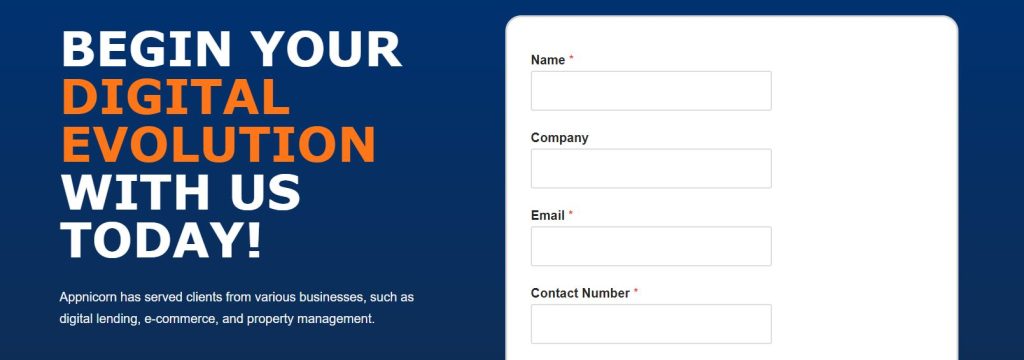
12. Content
Content is king. It is one of the most important elements of website design. A website uses texts, multimedia, and other information to communicate the brand's or business's message. Well-crafted content can establish brand identity and drive users to take further actions, such as making a purchase or requesting for a quotation.
13. SEO Optimization
SEO optimization involves the integration of various elements to enhance a website's visibility on search engines. Web designer needs to place meta tags and incorporate relevant keywords into content strategically. Besides, a web designer also needs to work on the technical aspects of SEO such as submitting sitemaps and creating the correct robots.txt file. The ultimate goal of SEO optimization is to drive organic traffic and increase the business's online presence.
14. Social Media Integration
Social Media Integration involves seamlessly incorporating social media buttons and feeds into a website's design to encourage social sharing. The integration allows visitors to easily share website content on their social media platforms. This can help to expand the brand's reach and foster user engagement.

15. Accessibility
Accessibility in web design involves creating websites with inclusivity in mind. It allows individuals with disabilities to access and navigate the site effectively. This design approach aims to provide a positive user experience for all users, regardless of their abilities or impairments. Some key features of accessible web design include alt text, keyboard navigation, readable fonts, and colour contrast.
16. Scalability
Scalability refers to the strategic planning and development of a site's architecture to accommodate future growth and changes. Its importance is often overlooked by website owners. If a website is not designed with scalability in mind in the first place, it could bring a lot of issues when the owner decides to scale the website to meet growing demands in the future.
A scalable design ensures that the website remains both technically functional and visually appealing regardless of the volume of traffic or content. This is extremely crucial for businesses that anticipate future expansions or a growing audience. By implementing scalable design practices, web developers can lay the groundwork for a website that can adapt to the evolving needs of the business. This helps to provide a sustainable digital presence over the long term.
17. Feedback Mechanism
Integrating features such as surveys, reviews, or comment sections allows users to share their opinions and suggestions. This can provide valuable insights for improving the website. Positive feedback can be highlighted to build trust, while constructive criticism offers opportunities for enhancements. By actively seeking user feedback, businesses can adapt their websites to meet user expectations better.
18. Analytics Integration
Analytics integration helps to incorporate analytic tools like Google Analytics to monitor and analyze user behaviour on a website. This key element provides valuable data that allows businesses to make informed decisions for continuous improvement. By tracking metrics such as user engagement and page views, analytics integration enables a data-driven approach to optimize the overall user experience. Businesses can then refine their web design and content strategy to align with user preferences.
What Makes a Successful Business Website?
A successful business website goes beyond mere aesthetics. It involves a strategic blend of design, functionality, and a positive user experience. Ultimately, a successful business website must be able to help the owner in achieving his or her business goals.
User-centric Design
User-centric design takes center stage in the blueprint of a successful business website. A website should utilize intuitive navigation, clear calls to action, and a visually appealing layout to guide visitors seamlessly through the business website. This approach allows potential customers to find the information they seek and also engage with the brand.
Today, users are accessing websites across various devices. A successful business website is responsive and mobile-friendly. It must adapt seamlessly to different screen sizes. This adaptability not only enhances user satisfaction but also positively influences search engine rankings.
Compelling content is the heartbeat of any website. From informative product descriptions to engaging blog posts, quality content can capture visitors' attention effectively. It can also help to communicate the brand's message accurately.
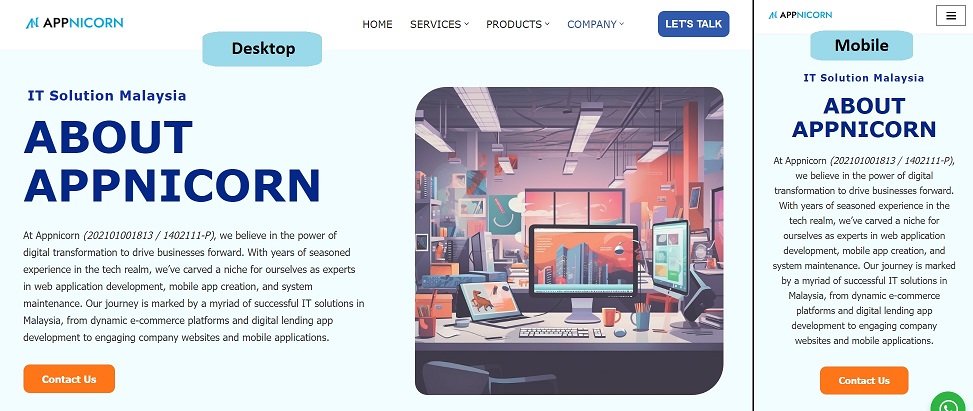
Strong Branding
A website is deemed a failure if it fails to represent its brand or business correctly. Strong branding is a crucial pillar supporting the success of a business website. Consistent usage of logos, colours, and typography can strengthen the business's identity. This cohesive brand presence contributes to a memorable and professional online image. As a result, trust and brand recognition are fostered effectively.
Efficient Navigation & SEO Optimization
What use is a website when it fails to attract and retain visitors? For a website to truly succeed, it must be easily discoverable online. SEO optimization is a strategic effort to improve a website's visibility on search engines. Incorporating elements such as keywords, meta tags, and a well-structured sitemap are extremely important for a website to stand out in the competitive digital space.
When visitors come to your website, efficient navigation is key to retaining them. Visitors must be allowed to browse the website effortlessly. Utilize menus, categories, and a logical web structure to guide users and reduce bounce rate. Ultimately, efficient navigation can encourage longer stays and improve the conversion rate.
Security Measures
Security measures are non-negotiable for a successful business website. Implementing SSL certificates, secure payment gateways, and robust data protection measures instill confidence in visitors. Trust is paramount in online interactions, and a secure website is fundamental to building and maintaining that trust.

How to Find the Right Web Designer or Website Design Agency in Malaysia?
Finding the right web designer or web design agency in Malaysia is a crucial step toward success. In this guide to a successful business website, we discuss how you can find the perfect fit for your web design needs in Malaysia.
1. Understand Your Needs and Goals
Before embarking on the quest to find a web designer, it is essential to have a clear understanding of your needs and goals. Define the purpose of your website, identify the features you require, and outline your long-term objectives. This clarity will not only guide your search but also help potential designers grasp the scope of your project.
2. Explore Portfolios
A designer's portfolio is a window into his or her capabilities and style. Take the time to explore portfolios of potential candidates or agencies. Look for diversity in their work – from different industries to varying design styles. This will give you a sense of their versatility and ability to adapt to different client needs.

3. Check Reviews and Testimonials
Client reviews and testimonials provide valuable insights into the experiences of others who have worked with the designer or agency. Platforms like Google, Facebook, or LinkedIn are good sources for unbiased feedback. Positive reviews highlight a designer's professionalism, communication skills, and ability to meet deadlines.
4. Assess Technical Proficiency
Web design involves a blend of creativity and technical expertise. Assess the technical proficiency of your potential web designer. Inquire about the platforms and technologies they are familiar with. A designer well-versed in the latest trends and technologies can ensure your website stays current and competitive.
5. Consider Budget and Value
While cost is a significant factor, it is equally important to consider the value you will receive. Run your cost-benefit analysis. A higher upfront investment may translate into a website that not only looks good but also performs well and stands out in the crowded digital space. Discuss the pricing structure, any additional costs, and the value they bring to your project.
6. Communication is Key
Effective communication is important throughout the web design process. From the initial consultation to project updates and post-launch support, choose a web design firm or designer who communicates clearly and consistently. The ability to understand your vision and translate it into a functional design hinges on effective communication.
7. Ask About the Design Process
Understanding the Design Process is essential for a smooth collaboration. Inquire about the steps involved, from the initial concept to the final implementation. A transparent and well-defined process ensures that everyone is on the same page and minimizes the risk of misunderstandings.
8. Check for Ongoing Support
A website is a dynamic entity that may require updates, maintenance, or troubleshooting. Inquire about the availability of ongoing support after the website is live. A reliable designer or agency will offer post-launch support to ensure your website remains secure and up-to-date.

9. Get a Contract
Once you have found the right fit, ensure that all terms and expectations are documented in a contract. The contract should cover the project scope, timelines, deliverables, payment terms, and any other important details. Having a clear and detailed contract protects both parties and sets the foundation for a successful collaboration.
Conclusion
In conclusion, crafting a successful business website is a journey that involves understanding the importance of web design and embracing key elements that contribute to a compelling online presence. We hope that you find this guide to a successful business website useful.
Whether you are delving into the world of web design for the first time or seeking to enhance your existing digital footprint, finding the right web designer is important to the overall success of your online venture.
At Appnicorn, we understand the potential of web design and its transformative power for businesses. If you are eager to explore a web design project, we invite you to reach out. Let's collaborate and elevate your online presence to new heights.